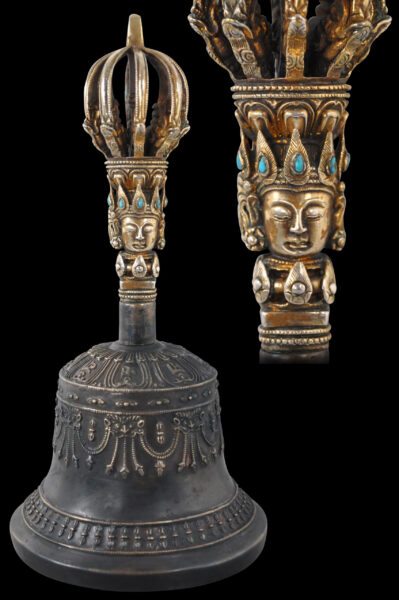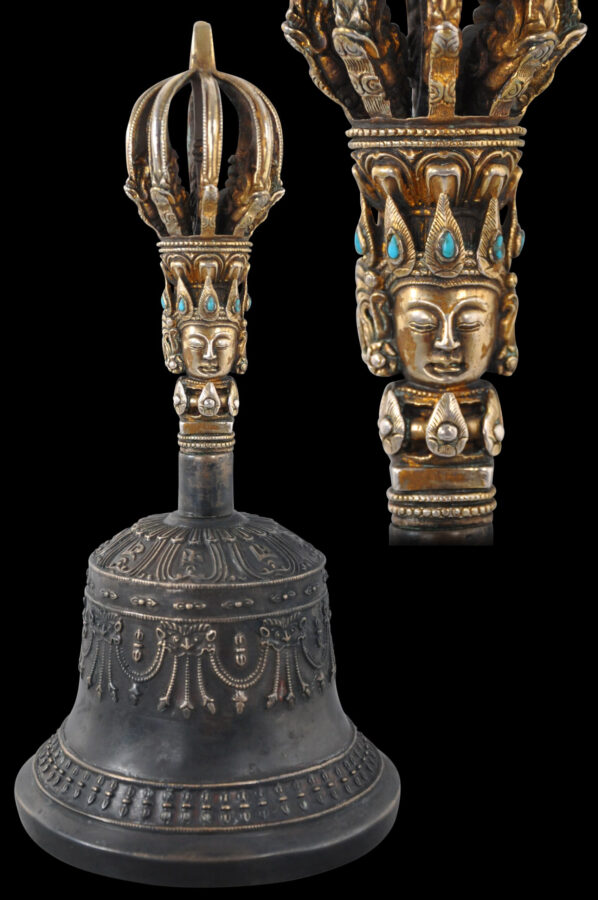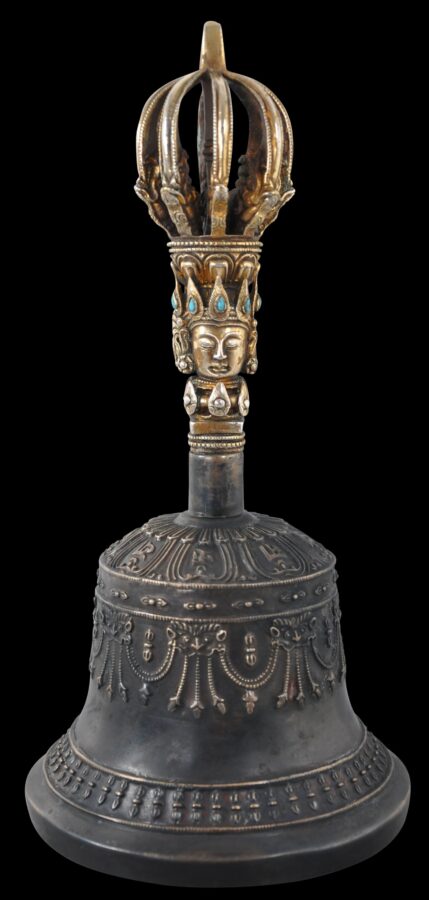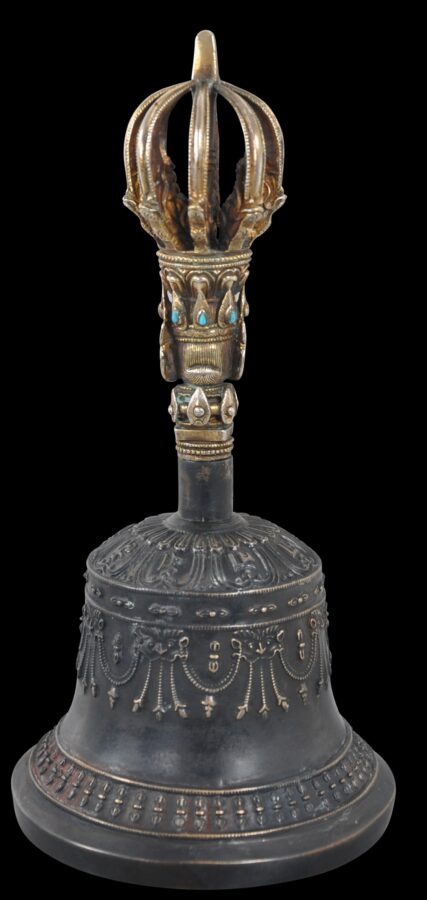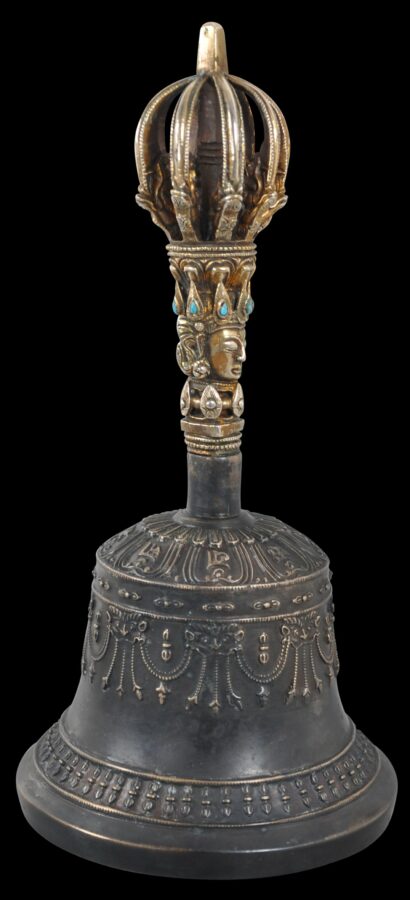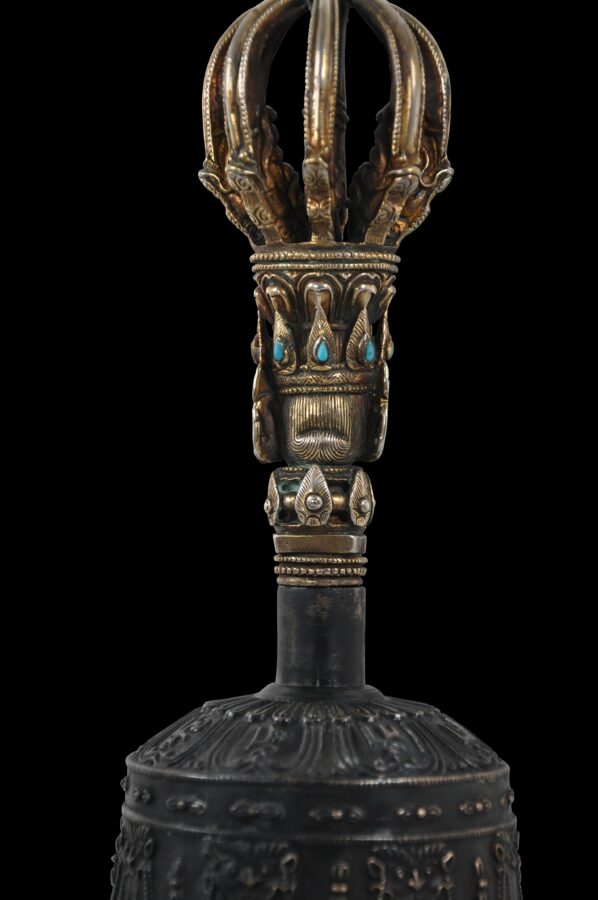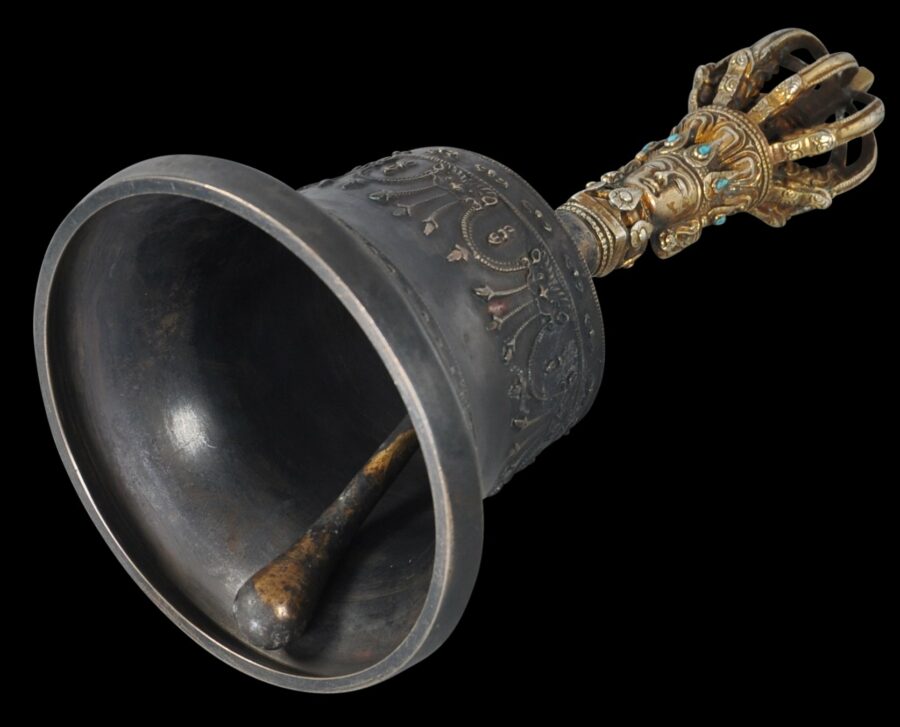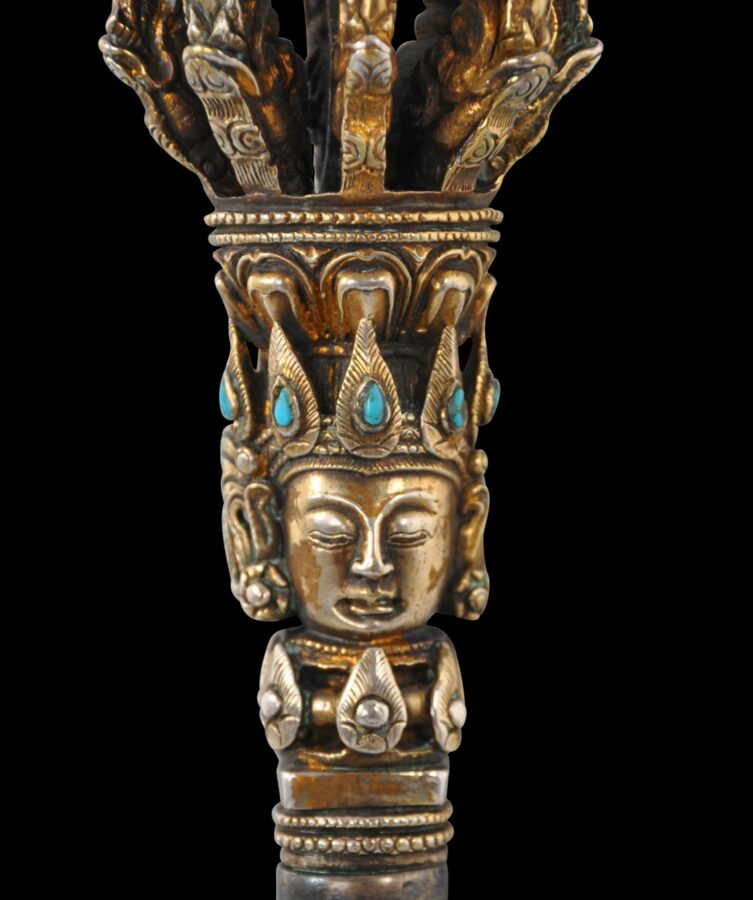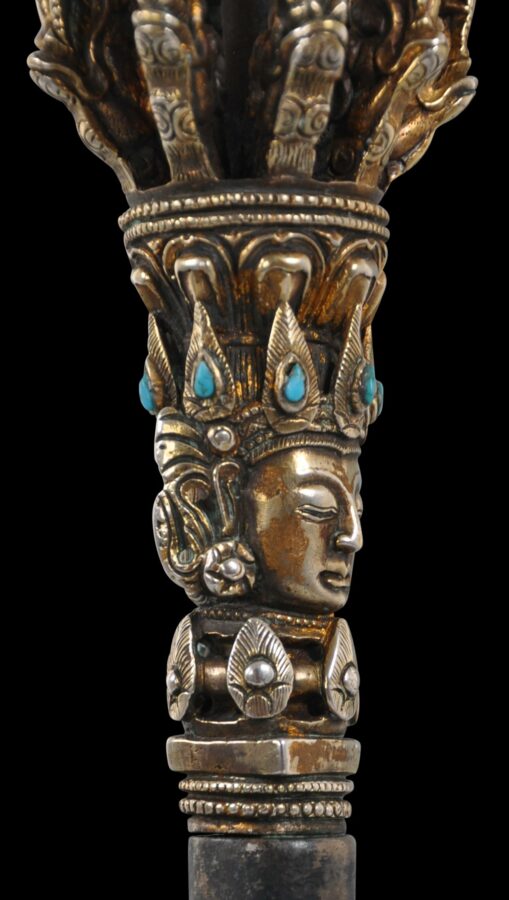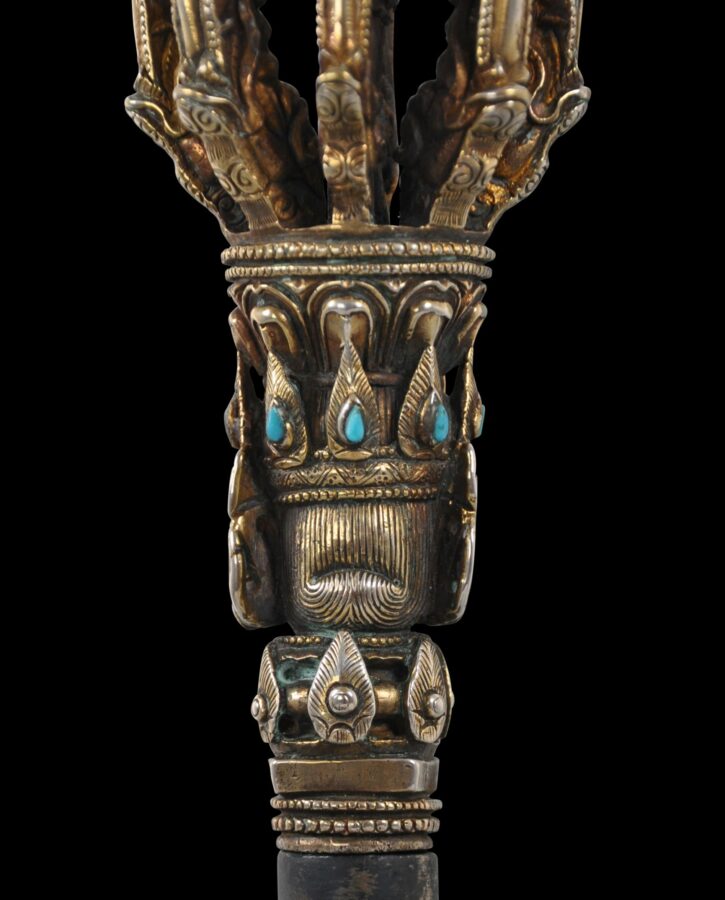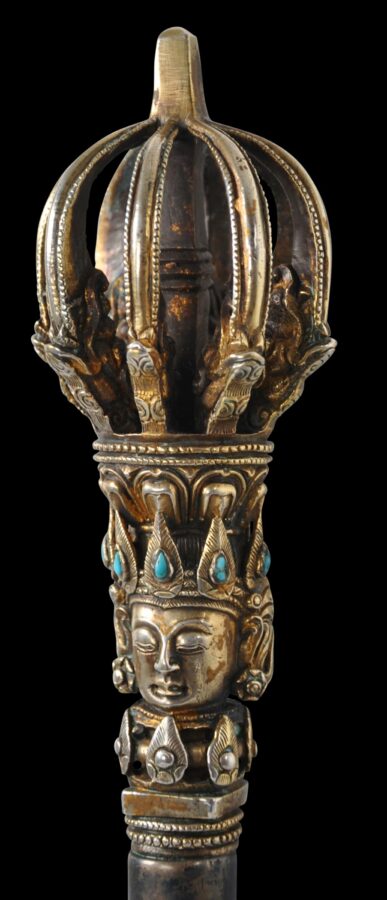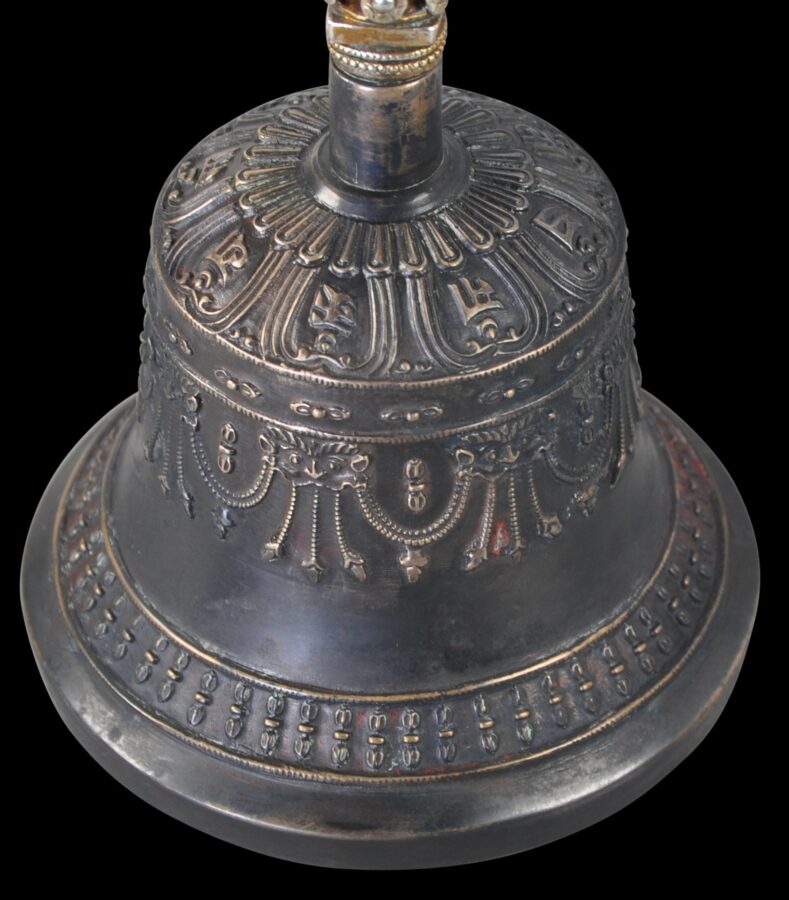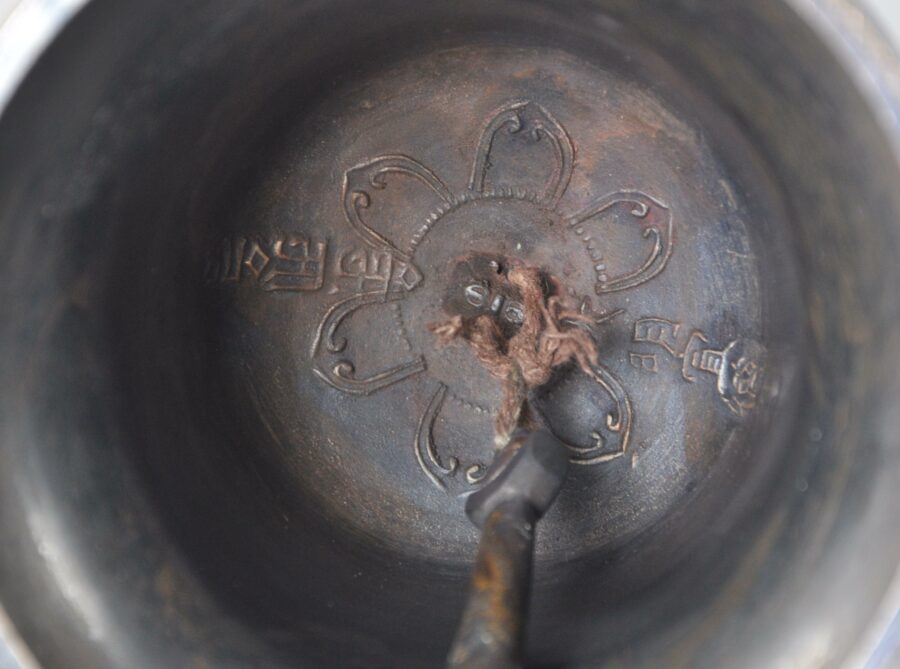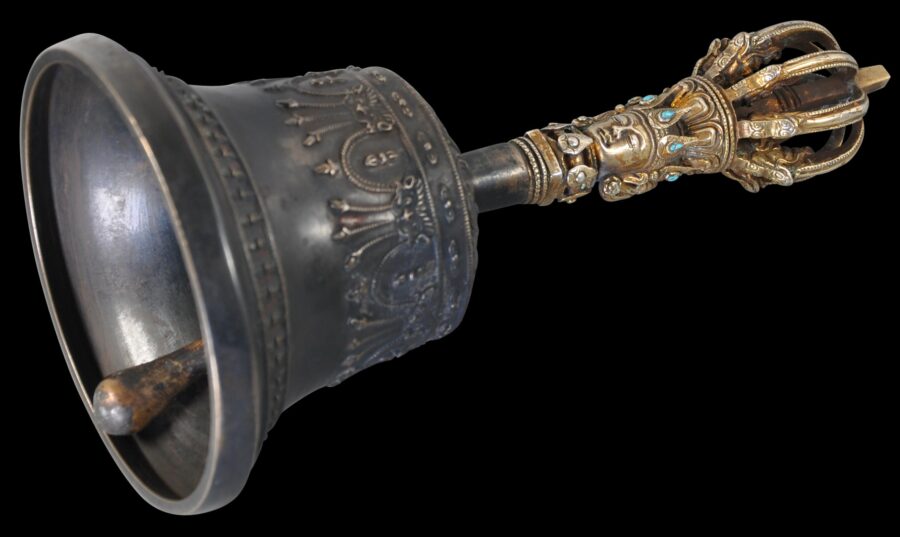This particularly large and beautiful ritual bell or ghanta has a well-cast metal base and an especially fine grip cast in bronze that has been gilded and inset with turquoise cabochons.
The grip is cast with the head of a peaceful female bodhisattva (the face is on one side, and the back of the head on the other – this is often thought to be a wisdom deity or yum) atop which there is a crown that is a nine-pronged half-vajra finial with each prong emerging from the ferocious jaws of a makara, symbolising that all beings are held by the vajra in the grip of compassion. The bodhisattva has a particularly fine hairstyle with the hair to the back being delicately crimped.
Ghantas with nine-pronged vajra finials are are less common. The more usual number of prongs is five.
The body of the bell is cast with various emblems including sacred lantsa script symbols ensconced in double lotus petal frames, over a row of tiny vajras, then a border of kala masks between which are cast more vajras and from which pendant garlands of pearls are suspended.
The interior of the bell is cast with a mantra, and an apocryphal Xuande six-character reign mark.
The bell retains its original clapper which is attached with an old strap.
The bell has a clear and pleasing tone when rung.
See lot 47, Bonhams, New York, ‘Indian, Himalayan & Southeast Asian Art’, September 18, 2013, for a related ghanta with turquoise inlay but with a five-prong vajra instead of nine prongs.
The ghanta was usually used in conjunction with a vajra (ritual thunderbolt). Both are important implements in tantric Tibetan Buddhism, and represent feminine wisdom and masculine compassion respectively, and are used in rituals and meditations in Vajrayana Buddhism.
The grip of the bell has good wear; the contours have been softened from age and ritual handling.
References
Linrothe, R., & J. Watt, Demonic Divine: Himalayan Art and Beyond, Rubin Museum or Art/Serindia Publications, 2004.
Lipton, B., & N.D. Ragnubs, Treasures of Tibetan Art: Collections of the Jacques Marchais Museum of Tibetan Art, Oxford University Press, 1996.
Thurman, R., & D. Weldon, Sacred Symbols: The Ritual Art of Tibet, Sotheby’s/Rossi & Rossi, 1999.


